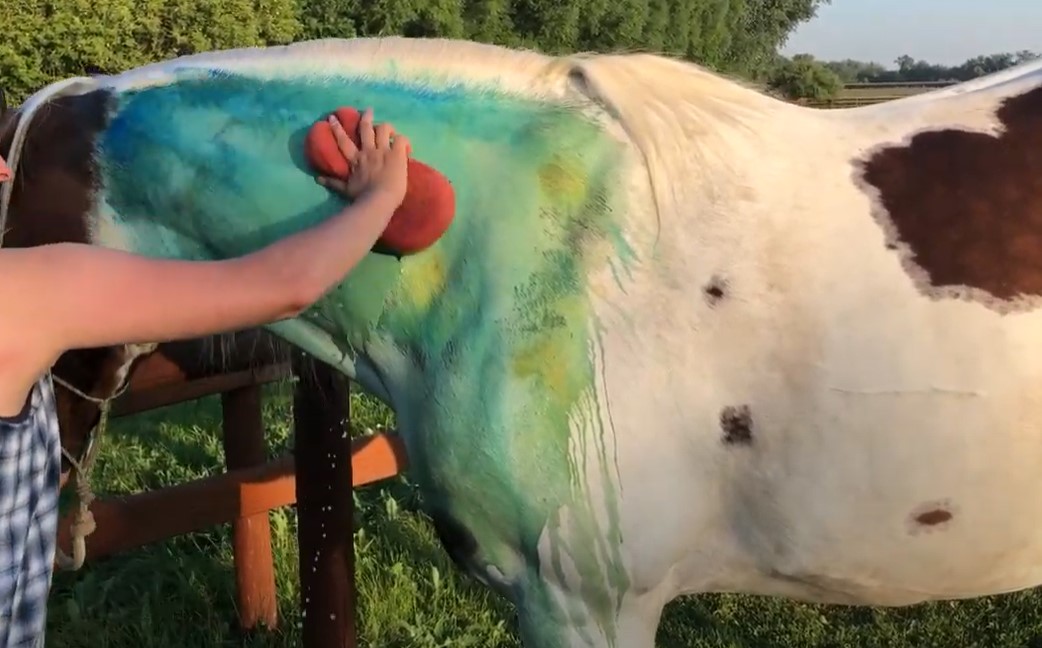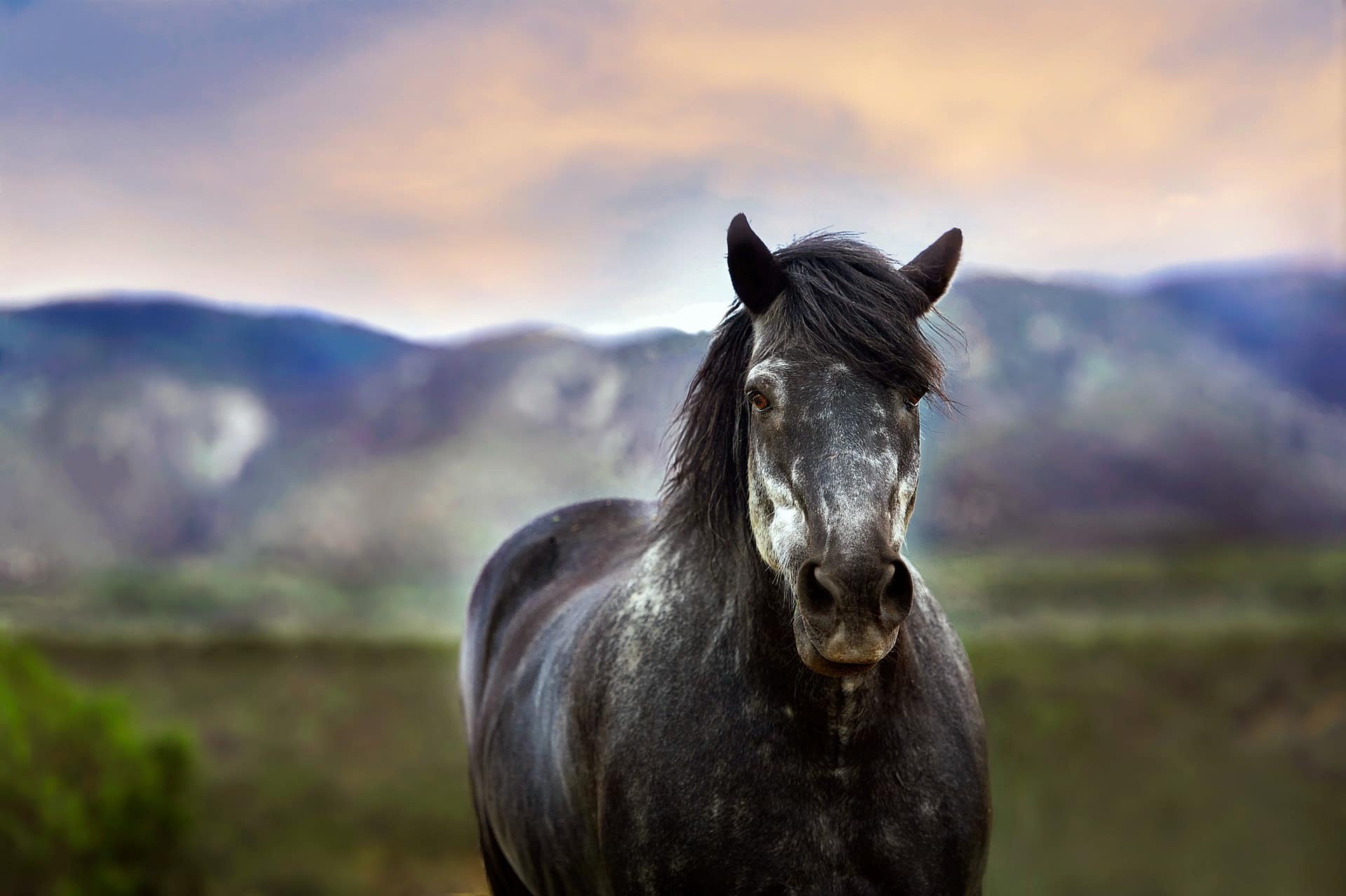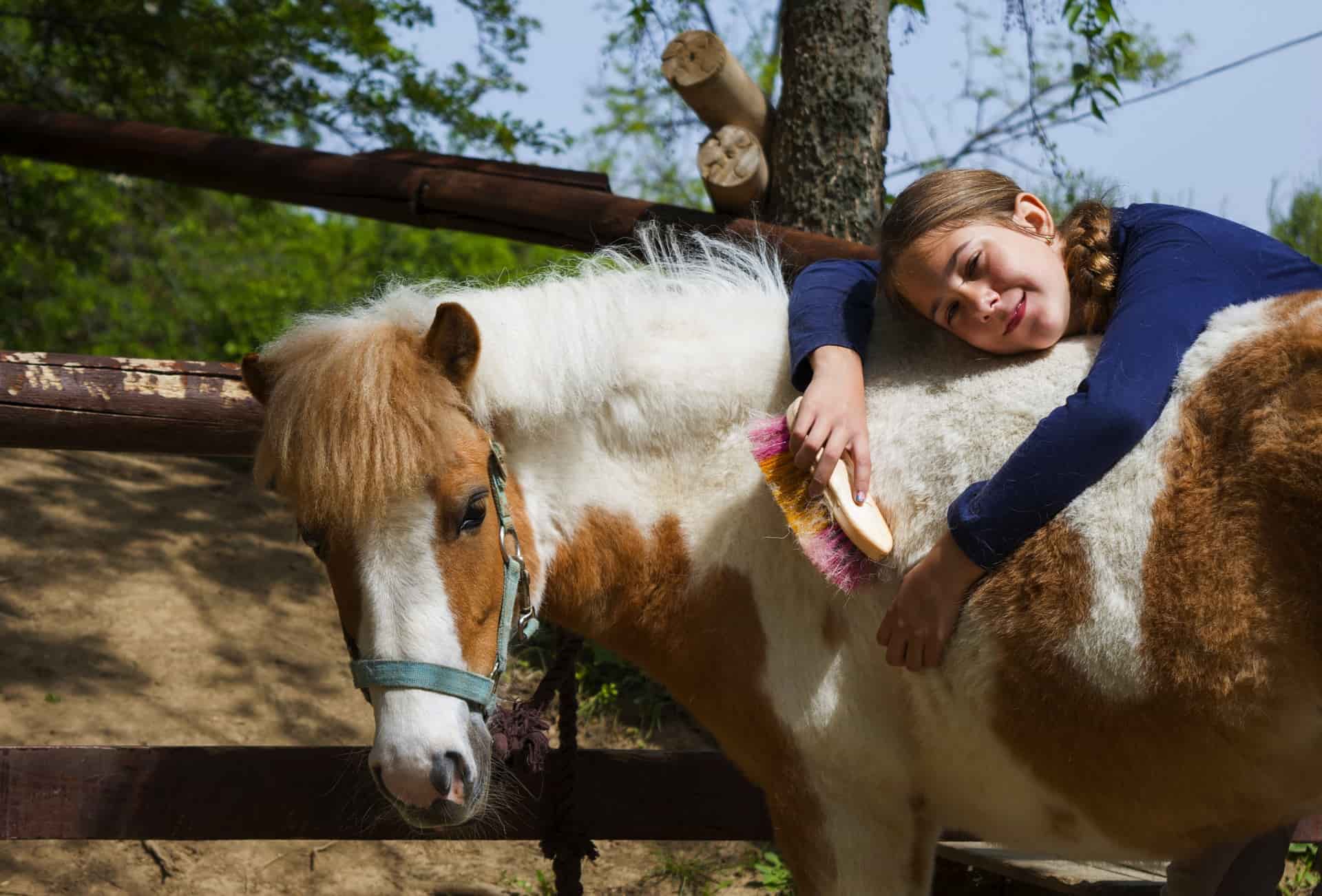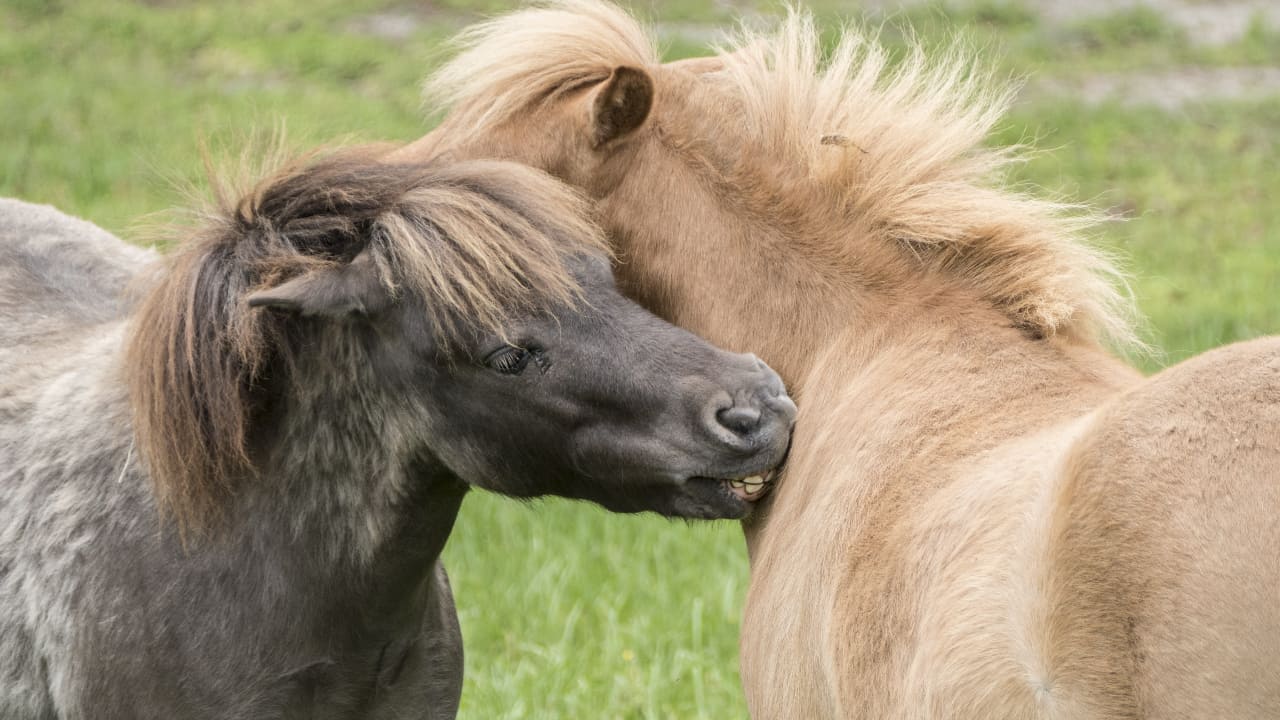Whether you're getting your horse ready for a parade, a race, or just for the heck of it, painting a horse should never put your animal's health in jeopardy. You'd be surprised just how toxic paint can be. So it pays to check the labels and make sure that the paint you've chosen won't put your beloved horse in a bad spot.
Horse safe paint comes in a variety of options, and sometimes, they're not even advertised as such. Fortunately, this guide should help you find the perfect pigment for your trusty steed without putting its health on the line.
Different Types of Paints for Horses
When you step into the shop with the intention of buying paint for your horse, you need to make sure you're choosing a formulation that's actually safe to use on a horse's coat and skin. That said, you can never go wrong with one of these five choices.
Horse Paint
The first and most obvious choice would have to be good ol' horse paint. Available in a wide range of colors, these non toxic paints use safe, natural ingredients that significantly reduce any potential risk of irritation or adverse skin reactions.
The water based paint will naturally fade over the course of 2-3 days depending on the amount you apply to your horse's coat. They're also usually water based allowing horse owners to conveniently wash away the pigment with water and mild soap.
Lots of companies produce paints intended specifically for use on horses. By far however, the most popular would have to be Tail Tamer's Pointy Paints Liquid Chalk. Available in a range of colors, these safe, non toxic washable paints provide vibrant color even on dark horse coats, and wash away with relative ease.
Pet Safe Paint
If you can use it from a dogs paws to the top of its head, you can almost be sure that you can use it safely on a horse. Pet paints can either come as a formulation that washes away with some soap and water, or as dyes that colorize the fur for a few days or weeks.
That said, if you were hoping to create patterns or write texts, numbers, and symbols on your horse's skin or coat, you would do well with a non toxic product like Jim&Gloria Washable Pet Fur Paint Dye pens that come in a box of 12 vibrant colors.
For painting or dyeing large areas of a horse's coat, the Warren London Critter Color Temporary Pet Fur Coloring Paint works best. Keep in mind though that certain formulations might not dye dark colored horses fur so well. So it helps to check reviews to see whether a product can work on darker fur.
Tempera Paint
Is tempera paint safe for painting your horse? The short answer is yes.
Also called egg tempera, tempera paint is a non toxic semi-permanent formula that's mainly used for crafts and school projects. Although it does dry like most other paints, it can be reactivated into wet paint by adding water. This is one of the reasons why it works so well to paint horses -- because it's easy to wash off.
More than that however, tempera paints are also made from non toxic ingredients. Combining colored pigments with water soluble binder mediums and even just straight up egg yolk, tempera poses zero risk of irritation and adverse reactions when used on a horse.
Tempera paints aren't too hard to find especially since it's the paint of choice for most school teachers. Handy Art Little Masters Tempera Paint works great for horse body paint. But if you want to cover larger areas of your animal's coat, Colorations Tempera Paint comes in huge one gallon bottles for your convenience.
Kid Safe Paint
If it's safe for a toddler, you can bet your bottom dollar its safe for your horse. Because young kids tend to explore their surroundings by putting things into their mouths, manufacturers like the Crayola brand have developed non toxic kid safe paint that eliminates any and all toxic ingredients that could cause gastric upset or skin irritation.
Also often called 'finger paint', these products like Crayola paint were specifically made for skin contact since younger kids tend to fumble when using a paint brush. And because they're mostly water based, these formulations can easily wash off with nothing more than mild soap and some warm water.
Popular choices for kids paint include Crayola Paint Safe Finger Paint for kids which come in large jugs for wide surface area coverage, and Jar Melo Safe Fingerpaints for Toddlers if you were hoping to paint symbols and texts on your horses.
Human Grade Face Paint
The face is often considered the most sensitive area of skin on the entire human body. So for any kind of formula to be deemed safe for the face, you should expect that it won't contain any harmful, harsh chemicals and ingredients.
What's particularly nice about non toxic human grade face paint is that it's often developed with lasting pigmentation. Since human skin tends to sweat and get oily after a while, these non toxic paints use binder mediums that enhance the lasting power of the formulations' vibrant colors.
Keep in mind though that because faces don't really require much coverage, these paint products don't come in such large tubs or bottles as the previously mentioned options. Nevertheless, choices like UCANBE Face and Body Paint Set and CCBeauty Professional Face and Body Paint Stick may provide sufficient pigment for drawing symbols and text on large horses.
What Paints to AVOID Using on a Horse

Certain paints can spell danger for your horse and may induce an adverse reaction and serious skin irritation. So while there exists a list of safe options you can use, there's also a list of paint types that you should definitely avoid using on your horse.
Acrylic Paints
Most horse owners make the mistake of using acrylic paint on their horses because they're typically labeled non toxic. While it might be true that these paints don't use harmful ingredients, they're considered a permanent paint. This makes acrylic paint especially difficult to wash off.
Some also claim that although they won't cause immediate irritation, some acrylic paint blends use an alleged carcinogenic.
Horse Hoof Polish
Just because it's labeled 'for horse's hooves' doesn't mean you can use it on any part of your horse. While horse hoof polish may work just fine to add some pizzazz to your horse's hooves, you shouldn't use the stuff on horses' coats or any other part of its body.
Horse hoof polish can be especially difficult to remove and may require harsh chemicals to completely wash off.
Food Coloring
Yes, food color can add a tinge of color to your culinary creations which says a lot about how safe it is. But that doesn't mean you can just slather the non toxic stuff on your horse.
Food color works almost like a dye and doesn't wash off as easily as other coloring agents, leaving your horse fancifully pigmented for several months.
Livestock Paint
Sure, it probably won't irritate your horse's skin or body. But livestock paint isn't exactly what you would use for horses events and occasions.
These paints are weatherproof because they're intended to mark an animal as someone's property, among many other purposes. Painting horses with livestock paint may leave your animal marked for months or even years.
Spray Paint
Unfortunately, some horse owners have made the mistake of using spray paints to decorate their animals for special occasions. Of course, the problem here is that aerosolized spray paint contains harmful chemicals that may cause injury and irritation when used on the skin or when inhaled.
Keep in mind though that hair color spray paints like Halloween hair color sprays aren't necessarily toxic, but present risk in how they might spread into your animal's eyes, mouth, ears, and nose.
Regular Paint
Even for just one time events, regular paint was never meant for use on horses. Regular formulations are chocked full of volatile organic compounds or VOCs which can cause serious irritation when used on the coat and skin of your horse, and when inhaled.
How to Apply Paint on Your Horse

Before painting your horse, you may want to groom it first. See our guides on choosing the best horse grooming kit and horse shampoo to get started.
Getting rid of all the dirt in its coat should help improve the staying power of washable paint, pet paint, or non toxic Crayola paint you might plan to use.
If you're using any of the safe options listed above (as you should), then you shouldn't be too worried about getting your own hands dirty. Straight up smothering your horse with paint using your bare hands proves to be the best way to get the design just how you want it.
And if your horse usually gets pats and strokes from you, then it should feel perfectly safe and comfortable as you get on with applying paint to its body.
For more experienced creatives, there's always the option to use a paint brush. Finer brush tips open up opportunities for more detailed painting. But if you want to cover larger areas over a short period of time, a sponge dabbed into the paint you're using should help speed up the process.
Horse owners with limited talent in the painting department might find it easier to work on achieving their ideal design by using a stencil. Cutting out the text, symbols, or patterns on a sheet of tarp and holding it secure against your horse can let you create detailed designs sans the skill and effort.
To spice things up, you might want to try loose glitter. Keep in mind though that it's not recommended to use glitter on a horse's head as it may enter the eyes, mouth, nose, and ears. You might also want to consider stepping outside of the barn when using glitter to keep it from contaminating food and feeding paraphernalia.
How to Remove Paint From a Horse

So the party's over and you're ready to restore ol' Mystery's shiny, brown coat. Most of the paints for horses listed above should come off pretty easily, especially if you choose a water-based blend.
Here's how to remove paint from your horse:
1. Rinse all over
Some paints require nothing more than a good hose down to completely wash away. See to it that you try to rinse everything off with just warm water first. If you used the right kind of paint, you should see most of the pigment wash off during this first step.
2. Soap and brush
Use a gentle horse brush with mild horse soap to clean away any residual pigment left behind by the water. Scrub your horse all over, working gently on areas with paint. Continue to use warm water to rinse off residue and wash away suds.
3. Repeat for light colored horses
It's usually harder to get pigment out of a light colored coat and white hair. And although it might feel tempting to give your horse a second bath right after the first, too much scrubbing can irritate its skin. Expect to bathe a light colored horse with white hair more than once to get the color completely out.
Safety Precautions When Painting Horses
Ready to get started on painting your horse? Make sure to keep these safety precautions in mind before you begin to guarantee a smooth, injury-free process:
Avoid painting your horse's eyes
This one should be a no brainer, but we'll mention it nevertheless. Sensitive parts and openings like the horses eyes, mouth, ears, and genitals should be approached with caution. In fact, they should hardly be approached at all. If you're working on the horse's face, avoid getting too close to its eyes, ears, nose, and mouth.
Perform a patch test
Before you paint your horse, see to it that you test the paint on your horse first. Apply a coin-sized patch on its rump to see how the horses skin will respond. Every horse is different, and it's possible for a horse to experience irritation or an allergic reaction even when using safe paints.
Strip your horse
Save for a grooming halter, you may want to remove everything like the horse blanket, saddle pads, and other accessories off of your horse. This just guarantees that as you paint on your horse, you won't have to worry about getting any color or stains on its expensive leather tack.
Make sure your horse is comfortable
Making a horse stand perfectly still for extended periods of time might prove a challenge for most owners. See to it that your horse is well-fed and that you treat the area with fly spray to help your horse feel more relaxed and comfortable.
You can usually tell if a horse isn't comfortable if the horse's muscles are tense and the animal refuses to stay still. An unsettled horse might move around, shake its head, and kick during the process, spelling trouble for both it and you.
Frequently Asked Questions
Is acrylic paint safe for horses?
No, acrylic paints are permanent paints that don't easily wash away, leaving stains on horses coats. Aside from that, acrylic paints have also been said to contain certain chemicals that can be toxic and might be carcinogenic.
How to paint your horse like a skeleton?
Skeleton paint often works best on primarily solid white OR black horses (not black AND white horses) Painting your horse like a skeleton calls for nothing more than simply painting it where its most prominent bones should be.
A single, long bone for each limb segment, and then a skull with round eye sockets should give you a pretty ghastly look even if you're not particularly gifted with painting skills. You can also look to inspiration online to find out how to paint your horse's head and body to achieve the look.
Is Crayola paint safe to paint your horse with?
That depends on what kind of paint you choose. For the most part however, Crayola paints are generally accepted as safe to use on horses.
Over to You
No, not all paints are completely safe for use on horses. So before you get started on coloring your beloved animal, better do some reading. Horse safe paints provide the best outcomes for your horses, bringing beautiful, bright colors without the risk of irritation or injury.









